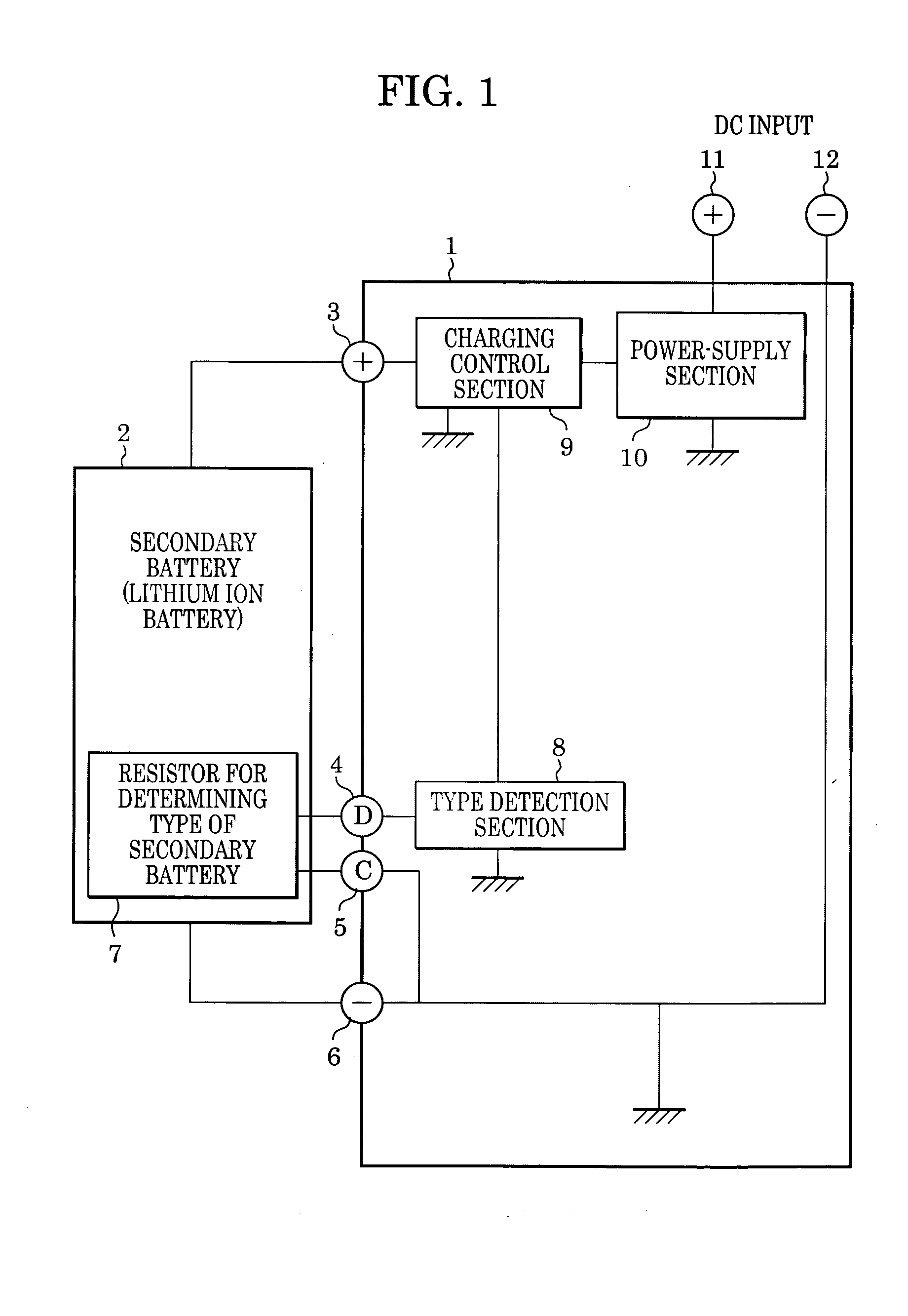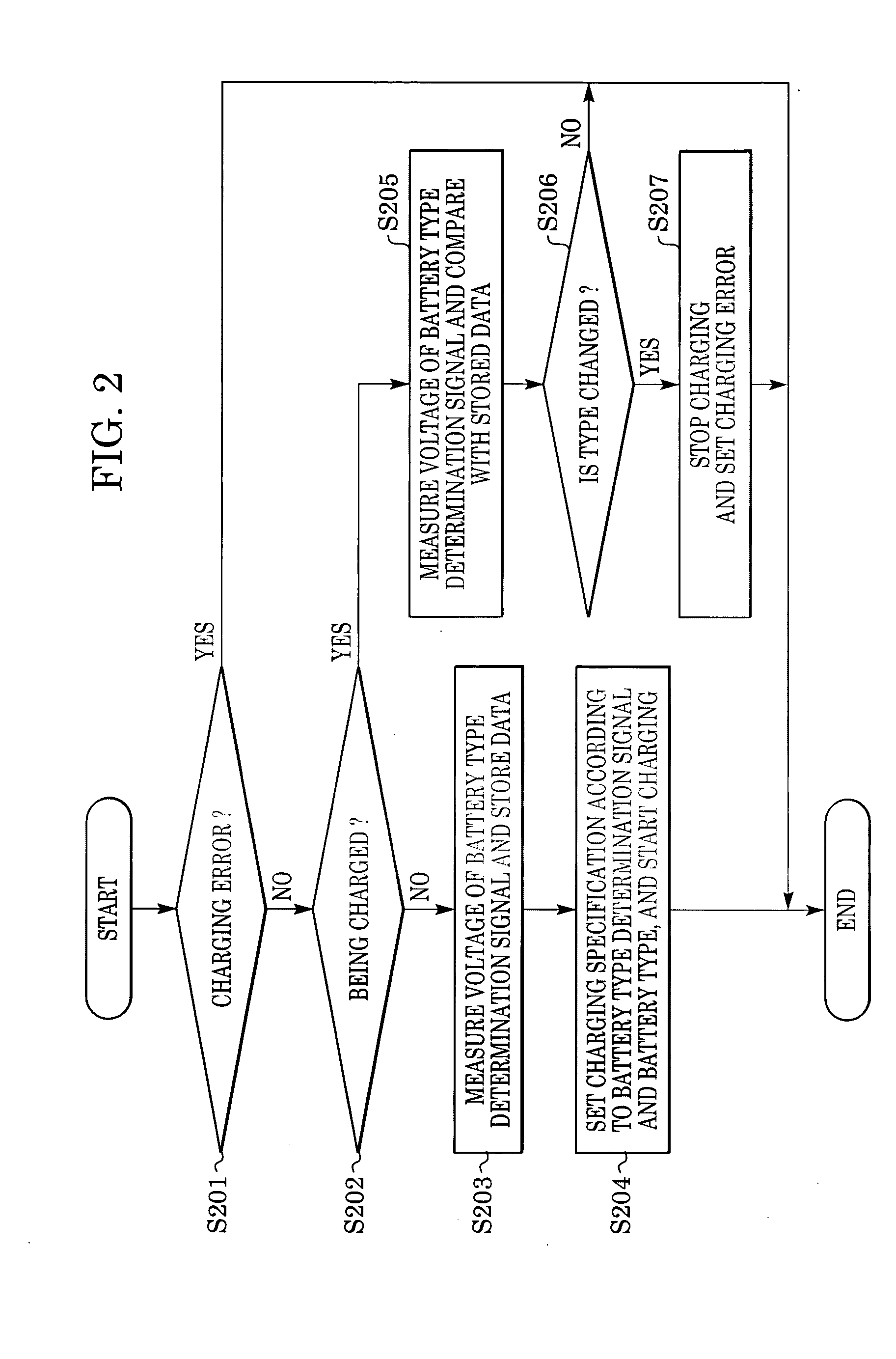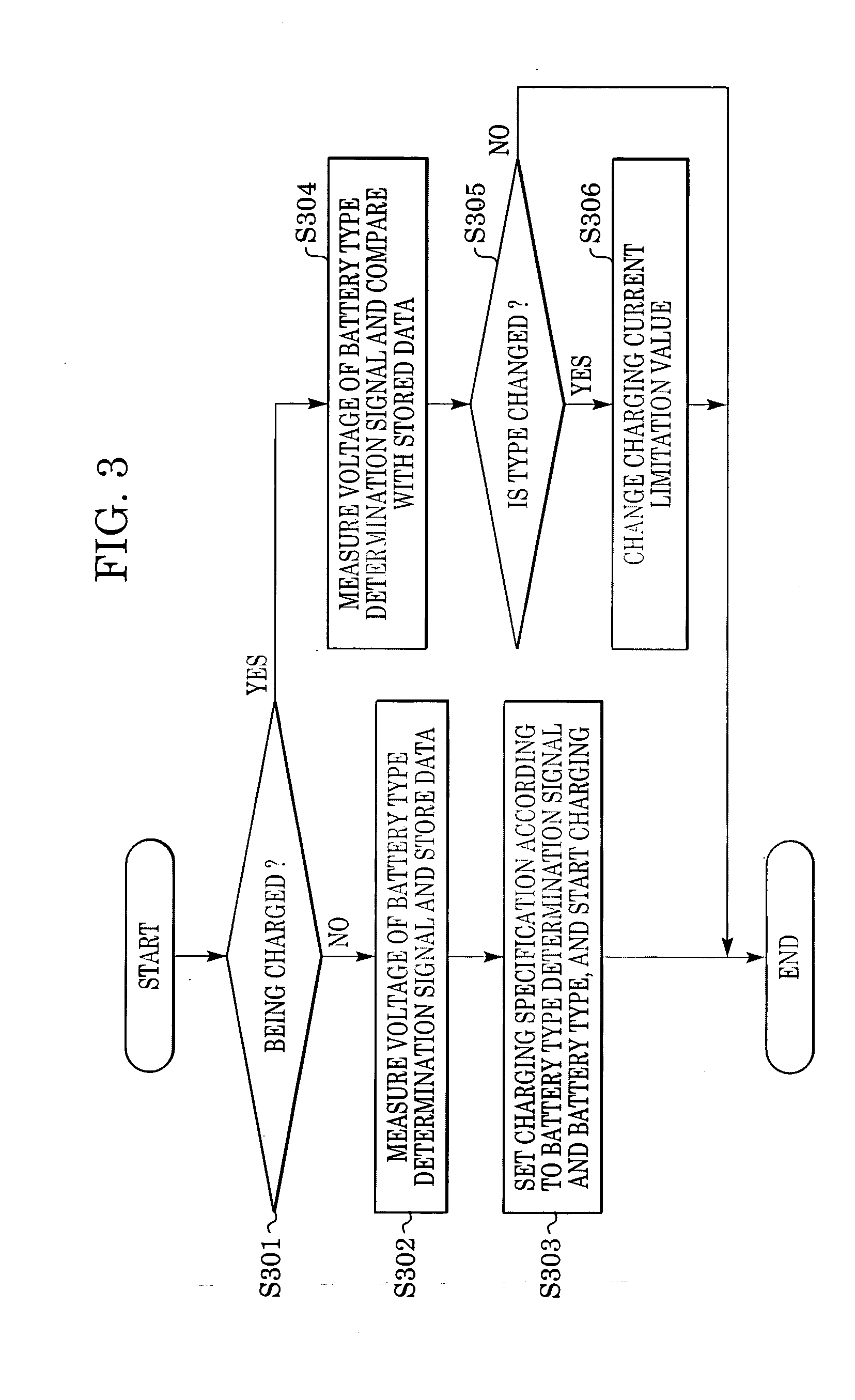Secondary battery charging method and apparatus
a technology for rechargeable batteries and charging methods, applied in battery data exchange, emergency protective circuit arrangements, transportation and packaging, etc., to prevent an abnormality during charging
- Summary
- Abstract
- Description
- Claims
- Application Information
AI Technical Summary
Benefits of technology
Problems solved by technology
Method used
Image
Examples
first embodiment
[0017] First Embodiment
[0018] A first embodiment of the present invention will be described below first with reference to FIGS. 1 and 2.
[0019]FIG. 1 is a block diagram showing the configuration of a secondary battery charging apparatus according to the first embodiment of the present invention. Shown in FIG. 1 are a secondary battery charging apparatus 1, a secondary battery (rechargeable battery) 2, a positive (+) terminal 3 for supplying charging power, a D terminal 4 for detecting the type of secondary battery, a C terminal 5 for detecting the type of secondary battery, a negative (−) terminal 6 for supplying charging power, a resistor 7 for determining the type of secondary battery, a type detection section 8, a charging control section 9, a power-supply section 10, a DC input positive (+) terminal 11, and a DC input negative (−) terminal 12.
[0020] The secondary battery charging apparatus 1 and the secondary battery 2 are connected at the positive terminal 3, the negative term...
second embodiment
[0033] Second Embodiment
[0034] A second embodiment of the present invention will now be described below with reference to FIG. 3.
[0035] The basic configuration of the secondary battery charging apparatus according to this embodiment is identical to that of the above-described first embodiment in FIG. 1, and accordingly, a description thereof is given by also using FIG. 1.
[0036] The operation of the secondary battery charging apparatus 1 according to this embodiment will now be described below with reference to FIG. 3.
[0037]FIG. 3 is a flowchart showing the operation flow of the secondary battery charging apparatus 1 according to this embodiment. The processing based on this flowchart operates at predetermined time intervals.
[0038] In FIG. 3, initially, in step S301, it is determined whether or not the secondary battery charging apparatus 1 is being charged. When it is determined that the secondary battery charging apparatus 1 is not being charged, the process proceeds to the sub...
third embodiment
[0044] Third Embodiment
[0045] A third embodiment of the present invention will now be described below with reference to FIG. 4.
[0046] The basic configuration of the secondary battery charging apparatus according to this embodiment is identical to that of the above-described first embodiment in FIG. 1, and accordingly, a description thereof is given by also using FIG. 1.
[0047] The operation of the secondary battery charging apparatus 1 according to this embodiment will now be described below with reference to FIG. 4.
[0048]FIG. 4 is a flowchart showing the operation flow of the secondary battery charging apparatus 1 according to this embodiment. The processing based on this flowchart operates at predetermined time intervals.
[0049] In FIG. 4, initially, in step S401, it is determined whether or not the setting content of the secondary battery charging apparatus 1 is in a charging error state. When it is determined that the setting content is in a charging error state, this processi...
PUM
 Login to View More
Login to View More Abstract
Description
Claims
Application Information
 Login to View More
Login to View More - R&D
- Intellectual Property
- Life Sciences
- Materials
- Tech Scout
- Unparalleled Data Quality
- Higher Quality Content
- 60% Fewer Hallucinations
Browse by: Latest US Patents, China's latest patents, Technical Efficacy Thesaurus, Application Domain, Technology Topic, Popular Technical Reports.
© 2025 PatSnap. All rights reserved.Legal|Privacy policy|Modern Slavery Act Transparency Statement|Sitemap|About US| Contact US: help@patsnap.com



